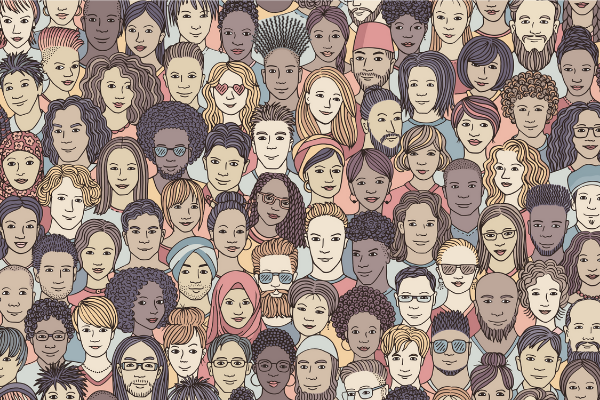Insights
INSIGHTS
All Topics
My Account
Eight Steps to Planning Marketing Campaigns
24 Sep 2020by Christine Chiu
A step by step guide to help your plan your first digital marketing campaign
Slick digital marketing campaigns don’t happen overnight. Planning a campaign takes effort from across different charity teams. In this guide, we take a step-by-step approach. Starting with the campaign goals you’re looking to achieve, we deep dive into how marketing campaigns work and what to look for.
Step One: Define your digital marketing goals
There are many reasons to launch a digital marketing campaign. For many charities, digital marketing campaigns focus around fundraising and awareness. Last year, the most memorable campaigns were those that had clear goals.
In 2019, some of the best examples included #RECLAIMSOCIAL and the Wildlife Trusts’ 30 Days Wild. These campaigns focused on creating awareness for charity causes.
In 2020, most charity campaigns have focused on digital fundraising. NHS Charities Together captured over £100 million though digital marketing. Smaller charities are also using digital marketing to fundraise. The RNLI raised over £25,000 by creating a Facebook post with a donate button. The post captured the excitement of a boat rescue. This digital fundraising campaign showed how the RNLI motivated social media audiences by using footage of a sea rescue.
The most successful campaigns we’ve seen have focused both on cause awareness and fundraising. For digital campaign leaders, it is important to define the goals of the campaign.
Zoe Amar, charity digital guru advises that charities set SMART goals. On charity marketing campaign goals, she says: “This is where you decide what you want your charity to achieve through your marketing. Perhaps a fundraising target, revenue target or improvements to your brand or website. Whatever you decide, your objectives need to be SMART (specific, measurable, achievable, realistic and timed to when you want to achieve them by).”
Step Two: Defining how you’re going to measure your campaign
For charities on a shoestring budget, return on investment (ROI) helps justify spend.
Defined and measurable outcomes can help to steer campaigns in the right direction. The most common and measurable campaign goals include:
- Hitting a set fundraising target;
- Increasing traffic by a certain percentage on your website;
- Boosting reach in terms of the number of social media followers
SMART campaign goals have specific and measurable metrics. These statistics help calculate the ROI. The ROI metric helps determine how much the campaign costs versus the benefit or outcomes achieved.
Step Three: Identifying your audience
Identifying your audience helps leaders create targeted campaigns. The strategy behind a targeted digital campaign involves creating a digital persona. Getting to know your audience means you can tailor your digital marketing campaign to their tastes.
Audience segmentation is a key marketing strategy. This strategy narrows down who the digital campaign is aimed at. In simple words, audience segmentation refers to how audiences are grouped together.
Gathering information about supporters can help you decide how likely they are to help you achieve campaign goals. Demographic information helps marketing professionals calculate this likelihood. This could include information like where donors live; how old they are; how much they donated previously; and whether they like to volunteer. All these questions are part of the audience segmentation process.
The answers to what your ideal audience looks like forms your target persona. Hootsuite, the social media manager says that information on target clients and audience includes:
- Age;
- Location;
- Average income;
- Typical job title or industry; and
- Interests
Step Four: Tailoring your campaign message for your target audience
After the target audience has been defined, a digital campaign persona helps charities ‘speak’ to potential supporters.
Tailored communications, or personalisation, forms the crux of the communication strategy. Personalisation has been shown to have a large effect on charity efforts. For the British Heart Foundation, customised messages and video resulted in a 14% increase in donations.
Athar Abidi, the social media manager at the time said: “Following the success of the London to Brighton bike ride campaign and our previous campaigns with EchoMany we are looking at how else we can use personalised video to support our campaigns.”
Armed with the audience persona, charity digital leaders can start to craft what communications might look like. Using constituent and supporter data, our top tips for personalisation are:
- Clean your data set
Make sure that once you’ve identified your audience members, that the data is correct.
Spell their names right and make sure that you’ve tailored messages according to what they are interested in.
Don’t send the same message to the same person twice.
- Use your data intelligently
Understand what the data trends are telling you about your audience.
For example, if most of your target audience are on Facebook but you’ve been planning your campaign around Instagram, it might be time to rethink.
- Aim for a bespoke experience
Experiences matter.
Audiences want an authentic charity journey.
Remember to take audiences through how you help people and where the funding goes.
Step Five: Planning digital marketing content
Now that your personalisation strategy has taken a hold, plan your digital content. There are many ways to produce content. To create noise-breaking material, make sure you’ve covered video, graphics, text, and interactive media. Keeping audience attention is key.
Creating flawless content includes using graphics. Marketing and communications teams using editors can create new, bespoke content for their cause. Digital tools for graphic and photo editing are great for teams making their own visuals. Many of the digital tools come with pre-populated templates, making it easy for beginners. More sophisticated software products cater to users with experience. Tools like CordelDraw are used by in-house graphic designers.
Plan for long-lasting content. Evergreen content works well with campaigns to stay on-purpose. Evergreen content doesn’t expire. This content isn’t news so it doesn’t become outdated.
Typically, evergreen content tells a story or is resource-based. These materials can also be reused for other content outlets. Stories and content around how your charity has helped someone work best. For event organisers, evergreen content could potentially focus on supporter experiences.
Step Six: Getting your message out there
Content needs to be showcased. Social media is a must for charities. The most popular platforms are Facebook, Instagram, and Twitter. Ensure that your audience segmentation exercise includes finding out which platform works best.
The three social media platforms cater to different audiences. SproutSocial says that Facebook has over 2.45 billion monthly active users. In age, the fastest-growing bracket is those over 65, whereas teens seem to have lost some interest. For campaigns focusing on older people, Facebook is a good place to advertise.
Instagram’s graphic and picture-based platform shows visual impact. Charities which have rich graphic content should post frequently. Statista finds that the platform has over one billion monthly active users checking in. A decade-old now in 2020, most of Instagram’s audience are between 18-24 years old.
A huge audience is available for charities just using Facebook and Instagram.
Twitter is a fast-paced platform. Posting frequently helps gain more followers. Buffer recommends posting between three to five times per day. Twitter helps charities engage with like-minded groups and organisations. “The more you tweet, the more opportunities you have to engage with fans, and the more total response you will receive,” says Buffer.
To manage all these social media updates, platform managers come in handy. The best social media management platforms for charities schedule posts and gather analytics. Remember, you’ll want analytics to support how you’ve managed your ROI.
Step Seven: Engaging with audiences
With the campaign up and running, interacting with audiences keeps them engaged. To increase the campaign’s reach, build a two-way relationship. Being a digital engagement leader means responding to your followers. Commenting on issues shows audiences you are aware and care. Interactive, diverse content builds engagement.
Livestreaming on social media responds to the demand for bite-sized videos. Facebook, Instagram and Twitter have functions to broadcast live. Livestreaming boosts fundraising efforts. Charities are tapping into the need for social events that haven’t been possible. Virtual quizzes and gaming tournaments get people to connect while at home.
Livestreaming has also been used as a massive global fundraiser. One World: Together at Home concert broadcast live on social media and entertainment platforms. The concert raised over $127 million for victims of coronavirus.
Engagement on social media helps keep your posts on the top of news feeds. The more you engage, the better your chances are that your posts are staying on top of news feeds. Social media algorithms workaround when you post, relevance, and how much interest you’ve garnered.
Step Eight: Gathering and reporting your results
Circling back to SMART goals, the data behind your campaign helps to support decision-making. Don’t be afraid to muck in. Before, after, and during the campaign, check back to the kinds of data you’re gathering. Make sure that the data you’re collecting is good quality.
Let the numbers and data drive your decisions and be wary of HiPPOs. Data can be pulled directly from CRM systems and the social media accounts you’re using. CRM systems have standard reporting templates, so these could be the basis of your report.
07 Mar 2025by Ioan Marc Jones
A-Z incredible fundraising ideas for charity
07 Mar 2025by Ioan Marc Jones
An A-Z glossary of service delivery terms and definitions
Our Events
Charity Digital Academy
Our courses aim, in just three hours, to enhance soft skills and hard skills, boost your knowledge of finance and artificial intelligence, and supercharge your digital capabilities. Check out some of the incredible options by clicking here.



















